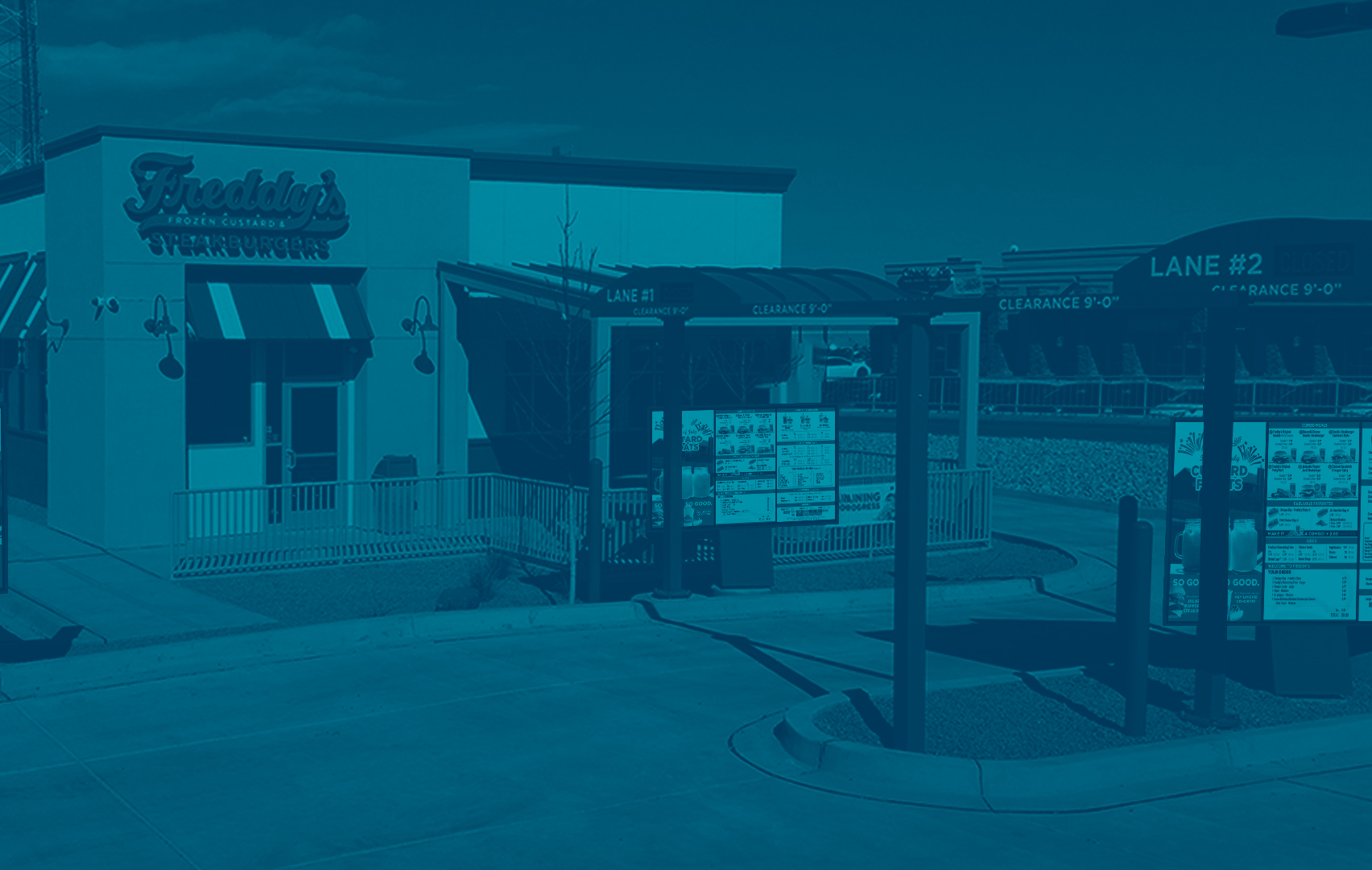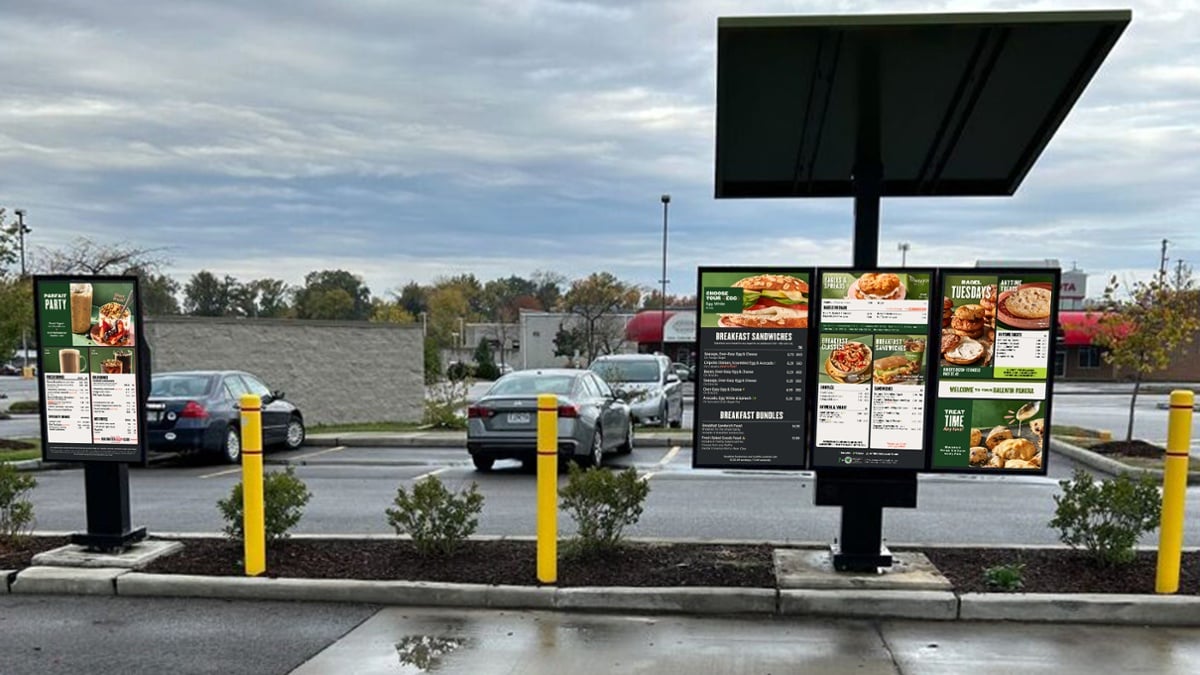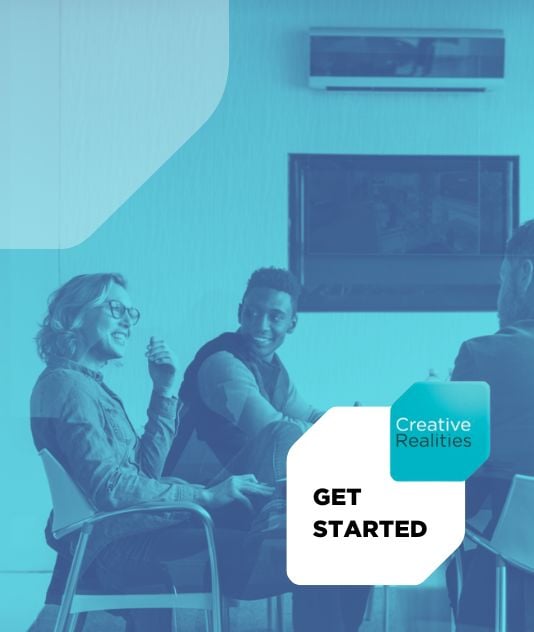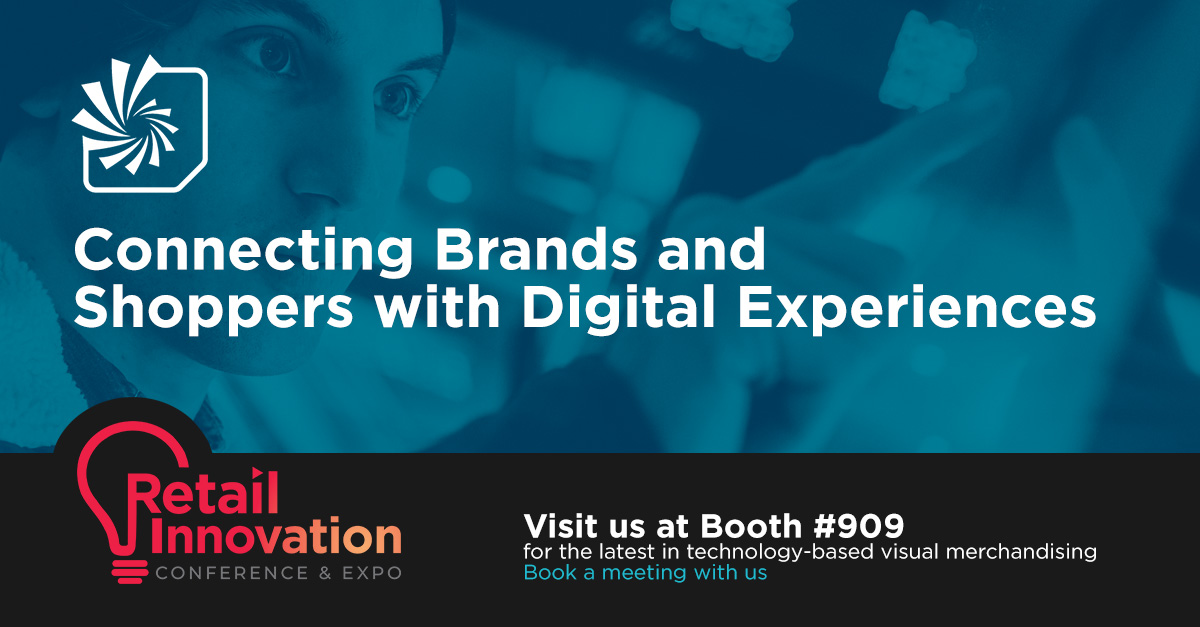Tech Meets Taste: What we learned from the Fast Casual | QSR Summit, June – in Chicago
The Fast Casual & QSR Summit, an annual conference that attracts emerging QSR brands like Velvet Taco and Betty’s Biscuits, new food concepts like Brooklyn Dumpling, and larger scale chains with a modern twist (think Chipotle, Salad & Go, Walk-Ons, and Freebirds)—about 100-150 operators—all come together to talk about the trade. There’s a different theme every year, but this year’s event was a hotbed of technology innovation under the appropriate banner “Digital Transformation”. Last year, everyone talked about “why” operators should adopt technology, but operators have moved beyond that. This year, instead of wondering, “Maybe I should try digital menu boards” (or some other tech tools), they understand they need a tech stack that all works together — and they're making decisions about what the right tech stack actually is, and how it might perform.
For quick service restaurants (QSR) and fast casual (FC) operators, choosing a cohesive and complementary tech stack is critical to improving the guest experience. When you remove the friction, you get orders more quickly. It’s that simple. When everything works together, your brand looks like it's pulled together and on point. And no matter how customers engage with you, they'll get a consistent experience—whether through a mobile app, digital menu boards, or a drive-through kiosk.
The whole notion of accelerating technology in this space is exciting, and that’s why, at its core, this year’s Summit was less about “should we do it?” and more about how we can do it better. So, let’s dig into the most enlightening takeaways that offer actionable strategies you can leverage to optimize operations, personalize experiences, and drive more sales in your QSR or FC.
Frictionless tech stacks (not tech “piles”)
Imagine a lunchtime rush. Orders are flying in, the kitchen is buzzing, and your staff is juggling multiple tasks. Suddenly, the point-of-sale (POS) system—overloaded and lacking scalability—crashes. The other systems, utterly dependent on the POS (and poorly integrated with it), become unresponsive. Chaos erupts, and business grinds to a halt. This exemplifies just one of the pitfalls of what we like to call a “tech pile.”
There’s a big difference between a tech pile and a tech stack. A tech pile is several systems operating in silos, loosely integrated (if at all). In contrast, a tech stack is a collection of systems that work together in a cohesive, integrated fashion. For restaurants, the best example of an efficient tech stack is one that integrates seamlessly with the system at the core of the restaurant operation: the POS.
Speakers at the Summit emphasized the critical role of a cohesive tech stack, where technology solutions from different vendors work together seamlessly like a well-oiled machine. A frictionless tech stack ensures smooth order processing, efficient inventory management, and a frustration-free experience for both staff and guests. Discussions also underscored the additional advantages of a cloud-based tech stack, such as scalability, automatic updates to the latest features, and remote management capabilities. For example, operators could implement a cloud-based solution that integrates their POS system, kitchen display system (KDS), and mobile app, providing immediate operational benefits that include:
- Real-time order updates: Orders placed online or through the mobile app flow seamlessly into the KDS, eliminating errors and delays.
- Inventory management: The system automatically tracks inventory levels and triggers alerts when restocking is necessary, preventing stockouts and ensuring product availability.
- Improved staff communication: Staff can access order details and updates on any internet-connected device, improving communication and expediting order fulfillment.
These and other operational benefits lead to better customer service and a significant boost in customer satisfaction.
Not-so-new dynamic pricing: a balancing act
Remember the headlines when Wendy's introduced dynamic pricing? The concept wasn't new but sparked conversations about its role in the QSR and FC space. Why? Customers got cranky about restaurants increasing prices—but that’s because they saw only a single facet of the practice.
Dynamic pricing has been around for years (think about airline and theatre ticket pricing). The Summit revisited this not-so-new concept, emphasizing its uses go far beyond mere “surge pricing” (i.e., boosting prices when demand is highest). In fact, restaurants can leverage dynamic pricing to:
- Offer discounted items nearing expiry: This helps reduce food waste and provides budget-conscious customers with valuable deals. Imagine flash sales on the digital menu board showcasing soon-to-expire salads or sandwiches at a discounted price.
- Implement time-based pricing: This could involve offering lower prices during off-peak hours to attract customers and level out the sales curve.
- Personalize pricing based on location: Restaurants in high-traffic areas might implement slightly higher prices than less busy areas.
A less obvious benefit to diners? When restaurants reduce food waste, it, in turn, reduces food costs and labor, and in the end, could mean a lower price to the customer!
And that’s the key. Clearly communicating the rationale behind price fluctuations ensures customers understand the potential benefits to them, such as reduced waste or increased menu variety. In other words, they don’t need to hear movie ticket prices are going up during peak periods, but rather about the discount they’ll get on concessions between 11:00 a.m. and 2:00 p.m.—when the lines will be shorter, too!
Creating raging fans: Stop selling and start connecting
The days of simply selling your food items are over. Perhaps one of the biggest takeaways from the Summit was the importance of building genuine connections with QSR and FC customers. Speakers emphasized the power of social media and personalization in fostering brand loyalty and helping brands create “raging fans”—a marketing expression conveyed with heart by Brooke Perry, VP Marketing at Velvet Taco, for what she describes as extreme loyalists.
Cultivating a strong social media presence requires you to engage with your audience, respond to comments and messages, and even consider running interactive contests or promotions. For example, a fan wrote a catchy song about Velvet Taco, and the restaurant posted it, receiving literally millions of views. Actions like this foster a sense of community, allowing connection with customers on a more personal level. In return, you get valuable user-generated content to showcase on social media channels. The question we asked ourselves is how can digital signage become a social channel on site?
Personalizing the experience leverages data to present recommendations and promotions based on customers’ past purchases, demonstrating you value their business and want to cater to their unique preferences. You might also develop a loyalty program to reward customers with points for their favorite menu items or offer them exclusive birthday discounts or freebies. Personalizing the experience creates a sense of value and encourages repeat visits. So, we asked ourselves, how can we continue to push the boundaries on personalization at the point of order, so we can both recognize a repeat customer and anticipate their preference?
Ditch the over-produced photography: embrace user-generated content
Another theme that resonated throughout the Summit discussions was that traditional slick advertising and marketing media aren’t cutting it anymore. Younger generations, in particular, are skeptical of overly produced content that feels staged and inauthentic. User-generated content (UGC) is content created by your customers—photos they take of their favorite menu items, positive reviews on social media platforms, and even short videos showcasing their dining experience. This content resonates with younger audiences because it feels genuine and unfiltered.
The key takeaway is that leveraging UGC can boost your brand’s authenticity. For example, you might run contests and encourage social sharing of photos of their dining experience. You can also showcase customer photos and positive reviews on your digital menu boards or in-store displays. Another approach is collaborating with micro-influencers with a strong following within your target demographic. All these can build trust and introduce your brand to a new audience more authentically than traditional advertising. The question we wrestle with is what the right combination or proportion of social or UGC content is to support customer experience, vs. what’s needed to showcase in order to facilitate the order.
Redefine the physical space: embrace the unconventional
The traditional restaurant space is undergoing a transformation. The Summit explored the trend of non-traditional physical spaces, where innovative brands are creating unique and memorable dining experiences. While still an evolving trend, some of the ideas that surfaced at the Summit were:
- Cashless, staff-free environments: Consider a self-service kiosk where customers can order and pay for their food without interacting with staff. This might appeal to customers who value convenience and a quick meal on the go.
- 24/7 in-store access: This could involve offering automated kiosks or mobile app ordering with pick-up options, allowing customers to grab a bite outside of regular operating hours.
- Carve out space for mobile order pick up, lockers, and third parties: While it may be challenging to incorporate third-party services (such as delivery services like Uber Eats) from an operations perspective, do it! Create a separate pick-up area that’s efficient for them without disrupting the guest experience.
- Provide free but gated Wifi: This is great for email capture that drives up customer acquisition, loyalty and transaction size (which Smashburger is doing with great success).
Regardless of the physical design, speakers stressed that omnichannel consistency is crucial. Whether in-store, online, or through your mobile app, the brand experience must be seamless across all touchpoints. Maintaining a consistent brand identity includes using the same color scheme, logo, and messaging across all your platforms, whether your website, social media pages, or in-store signage. And (back to the tech stack again!) offering seamless integration ensures your mobile app and online ordering system connect with your in-store operations, allowing customers to place an order online and pick it up quickly and easily at your restaurant.
By embracing unconventional physical spaces while maintaining omnichannel consistency, QSRs and FC restaurants can cater to customers’ evolving needs and create a truly memorable dining experience.
Driving up order value: “DIY” ordering
Increasing order value is a never-ending goal for any restaurant. Summit speakers discussed the growing importance of kiosks in this area, stressing that kiosk orders can increase orders by 20% or more compared to traditional person-to-person ordering methods. We can attribute this increase to several factors:
- Tempting visuals and upselling prompts: Kiosks offer a visual representation of menu items, often featuring high-quality photos that can trigger impulse purchases. Additionally, strategically placed upselling prompts can encourage customers to add sides, drinks, or desserts to their orders. Imagine a tempting image of a juicy burger alongside a suggestion to "complete your meal" with a combo that includes fries and a drink.
- Personal environment with reduced pressure and time for browsing: Unlike face-to-face ordering, where customers might feel rushed, kiosks offer a more relaxed environment where they can browse the menu at their own pace, free of judgment. A more thorough exploration of menu options can potentially lead to a larger order.
- Customization is made easy: Kiosks empower customers to easily personalize their orders, such as adding extra toppings to a burger, opting for a larger size, or selecting specific sauces. Customizing their meal can increase customer satisfaction and encourage them to spend more.
Data is gold: unlocking the power of insights
Data is a goldmine for businesses, and the Summit emphasized the importance of data capture and utilization. However, many QSR and FC brands struggle to leverage customer data effectively, missing out on valuable insights that could improve their operations and marketing efforts. For example:
- Using sales data to identify top-selling items during peak hours and adjusting inventory levels to meet demand.
- Using customer history data to personalize menu recommendations, such as a new salad option for those who typically order healthy items.
- Analyzing customer demographic data to help identify your target audience and tailor your marketing, social media, and promotional messages accordingly.
- Analyzing customer behavior to identify areas for operational improvement, like removing bottlenecks in the kitchen during peak hours.
Despite the benefits of such insights, data utilization comes with challenges (and potential solutions).
- Data silos: Many restaurants have data scattered across different systems, making it difficult to get a holistic view of their customers. Implementing a centralized data management system can help overcome this hurdle.
- Lack of expertise: Extracting meaningful insights from data requires analytical expertise. Hiring data analysts or partnering with data management companies can bridge this gap.
By overcoming these challenges and harnessing the power of data, restaurants can better understand their customers and make data-driven decisions that drive growth and profitability.
Back to the tech stack: choosing technology partners to help you leverage these trends
The Fast Casual & QSR Summit 2024 provided valuable insights into the industry’s latest and most critical trends. Restaurant operators can begin leveraging most (if not all) of these trends by addressing the first one: the tech stack. Speakers emphasized the importance of operators selecting the right partners to help navigate this ever-evolving space. These partners should be industry experts with a proven track record in the QSR and Fast Casual space, of course, but their systems must also be able to seamlessly integrate with those of others who are the best at what they do. Only then can you have an efficient tech stack rather than a dysfunctional tech pile.
A cohesive, frictionless tech stack can do more than ensure your systems work together smoothly and seamlessly with your POS. It should:
- Manage your digital signage menu board solutions, its content, and social feeds
- Support (and facilitate!) dynamic pricing
- Enable personalization of the customer experience
- Work with the back of house
- Integrate with drive through environments, which requires a different work flow all together
- Facilitate upselling with helpful and personalized content and offers via self-service kiosks
- Unlock the wealth of customer and sales data in your system for actionable insights
Why Creative Realities? Here's how we can help
Creative Realities is an expert in digital signage and digital menu-based solutions bringing hardware, software and content together to drive guest behavior when they are on site. Our purpose-built digital signage CMS platform (Clarity) has been designed for foodies with ease of use but developed with tech-stack integration in mind, including several POS platforms (Brink, Square, Clover, Toast, and Grubbr, to name a few) and order confirmation and fulfillment systems. They work seamlessly with your menu boards, kiosks, and online presence to ensure your brand experience is consistent at every customer touchpoint.
For seasoned F&B operators and those just starting out, the topics stressed at Fast Casual & QSR Summit 2024 are aligned naturally with our experience-set, and why we can help deliver an array of digital menu experiences at scale.
Tap here to view our use cases, and get in touch.
Share this
You May Also Like
These Related Stories

The Modern QSR Requires an Evolved Drive-thru Experience

How Smart Signage Platforms Solve the Menu Management Headache


